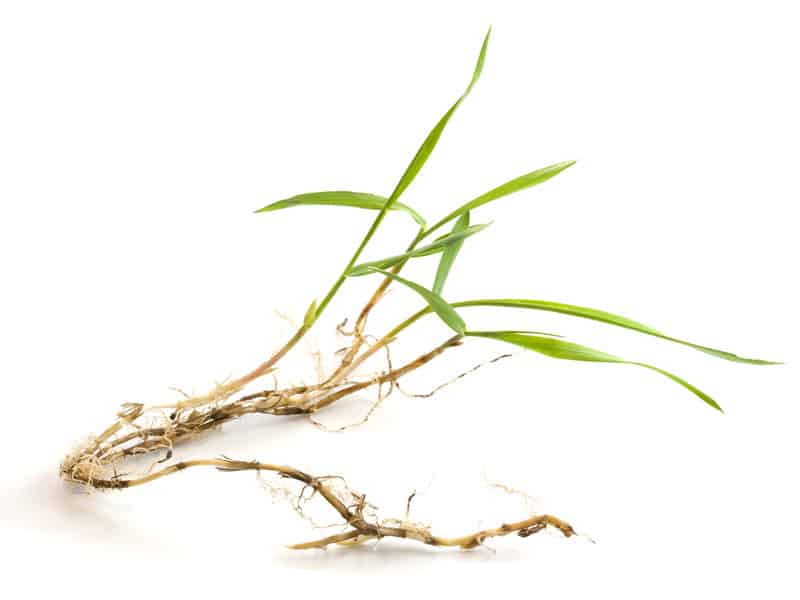Crabgrass is an annual summer weed. It infests lawns, vegetable gardens, ornamental gardens, orchards, and vineyards.
Botanical name: Digitaria, various species
Organic Weed Control at Amazon
- Monterey Vegetable Pre-Emergent Weed Control
- Homietina Heavy Duty Weed Barrier Fabric 4×300-feet
- Preen Natural Vegetable Garden Weed Preventer
- Green Gobbler 20% Vinegar Weed and Grass Killer
- WeedGuard Plus Biodegradable Paper Weed Barrier

Crabgrass description and life cycle
- Crabgrass grows 4/5 to 1⅓ inch tall.
- Stems (called culms) are erect and prostrate.
- Flat, pale green leaves, either smooth or covered with coarse hairs; membranous sheath on the inside of leaf blade.
- Leaves alternate on the stem.
- Commonly forms a dense mat.
- Shallow rooted.
- Florets grow in terminal racemes on upright stems, often purple; blooms in late summer.
- Reproduces by seed and by roots growing from swollen joints in the stems.
- A single plant can produce 8,000 seeds.
- Prefers dry and sandy soil.
Crabgrass root system
Crabgrass has a shallow central root. Stems sprawl like a crab from the crown. The plant can set down new roots from swollen joints or nodes along the spreading stem.
Crabgrass organic control
- Dig out the crown of the plant and remove the central root and all stems.
- Pull up plants before they set seed. Stopping seed production is the best control.
- Mulch with wood chips or landscape fabric to block sunlight and seed germination; spread a fine mulch 2 to 3 inches thick.
- Remove any plants that emerge from mulch before they spread new seeds.
Crabgrass range
Throughout the United States with the exception of southern Florida and Southwest.
Four quick ways to control weeds
- Weed early. Control weeds in the first month after they germinate.
- Weed often. Hand weed every two weeks through the season.
- Weed by hand when the soil is wet (best to get roots).
- Use a hoe if the soil is dry. Decapitate weeds before they flower and drop seed.
Related articles:
Vegetable Garden Organic Weed Control
Vegetable Garden Organic Pest Control
Vegetable Garden Diseases Problem Solver
Garden Planning Books at Amazon:
- Vegetable Garden Almanac & Planner
- Kitchen Garden Grower’s Guide Vegetable Encyclopedia
- Vegetable Garden Grower’s Guide
- Tomato Grower’s Answer Book















